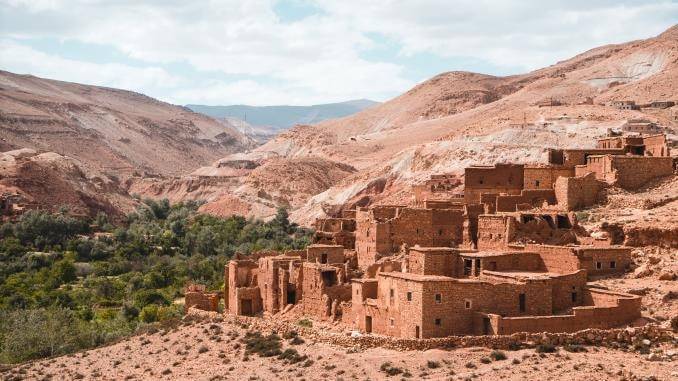Inside My Moroccan Adventure’s Incredible Journey Into The Valley Of 1000 Kasbahs
Photo from Unsplash
With its location at the crossroads of European, Arabian, and African cultures at the southern edge of the Mediterranean Sea, Morocco is often criminally overlooked as a top-tier destination for diverse, adventure-filled getaways. With vast Saharan dune seas, pristine desert mountains, a vibrant culture, and fantastic cuisine, Morocco offers staggering variety for wayward travelers looking to live an incredible story.
A country like Morocco needs a special touch, and for a truly in-depth view of this extraordinary place, book a tour through the Valley of 1000 Kasbahs with My Moroccan Adventure. Adil, one of My Moroccan Adventure’s two co-founders, is a national guide of Morocco and native to the Saharan regions featured on the trip. The other co-founder, Jade, is an expert-level yoga instructor who guides opt-in wellness experiences and occasionally leads yoga retreats into the mesmerizing featured destinations. Together, they lead a team of Moroccan natives intimately familiar with the country’s history, geography, and customs and offer tours in English. The intricate experience, tailored for groups and individuals of all genders, is an exceptionally authentic, detailed view of Morocco and is not to be missed. All that is required is airfare to and from Marrakech—everything else is taken care of once you’ve landed.
The Valley Of 1000 Kasbahs gets its name from the numerous kasbahs, or fortresses, lining the ancient road from sub-Saharan Africa that once hosted caravans from as far away as Timbuktu. The journey begins and ends in bustling Marrakech, one of Morocco’s four imperial cities and a thriving hotspot of local culture, food, and nightlife. After settling into your glamorous countryside villa lodgings, walk the charming streets of Gueliz and step into the upscale shops, imbibe some fine dining, dance at one of the many trendy nightclubs, or head into the enchanting mazelike Medina, the old part of the city that is now a UNESCO World Heritage site. As you wander the lively, narrow corridors of the district, see the spice merchant for a dazzling lesson in the 35 spices that form innumerable concoctions aiding ailments ranging from brain fog to stuffy noses; hear the sparks and crackles of welders creating unique works of metallic art in the many souks, or markets, hidden off the pathways; book a Moroccan hammam and relish a nourishing massage and vitalizing cleanse to feel like a brand new person; get stumped by the puzzle box handed to you by the expert woodworker whose crafts are as rich with detail as they are with cleverness.
After Marrakech, board a fleet of SUVs and leave the city for a stop in Ouarzazate, also known as the “Hollywood Of Africa” for its famous role in local film history. Feast on a fine plate of skewers and delicious Moroccan couscous in the town responsible for classic scenes from Game Of Thrones, The Mummy, Gladiator, and Lawrence Of Arabia. After Ouarzazate, catch the idyllic sun-baked peaks of the towering Anti-Atlas Range off in the distance that were once joined millions of years ago to the Scottish Highlands, the Norwegian Caledonians, and the North American Appalachians as part of the Central Pangaean Mountain Range.
The next stop at Telouet includes a tour of one of the titular valley kasbahs commonly seen along the route. These fortresses were historically homes for the local sultan and offered shelter and protection to passing caravans. As you step through the ornate doors, whose dual handles provide widths for livestock and an inset version for humans, you might notice a sudden temperature drop as you pass into the interior. The earthen walls, common to Moroccan architecture, are designed to cool the buildings’ insides as a countermeasure against the scorching summer sun. Within the ancient halls of the kasbah, take in the precise detail of the handcrafted ceilings, walls, and floors, or cherish the view of the picturesque countryside from one of the many gorgeous elevated windows.
-

-

-

-

-

-

-

-

-

-

-

-

-

-

-

-

-

-

-

-

-

-

-

-

-

-

-

-

-

-

-

-

-

-

-

-

-

-

-

-








































